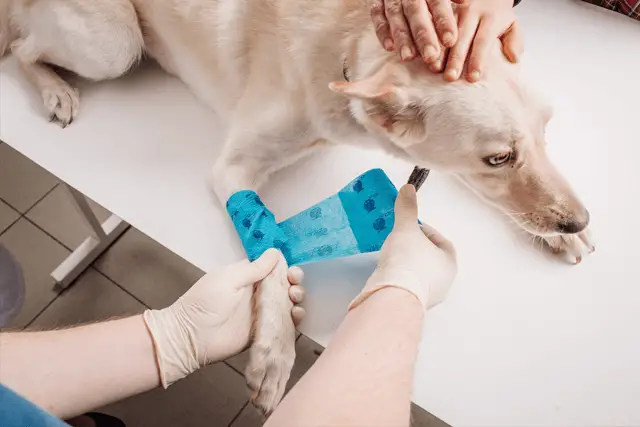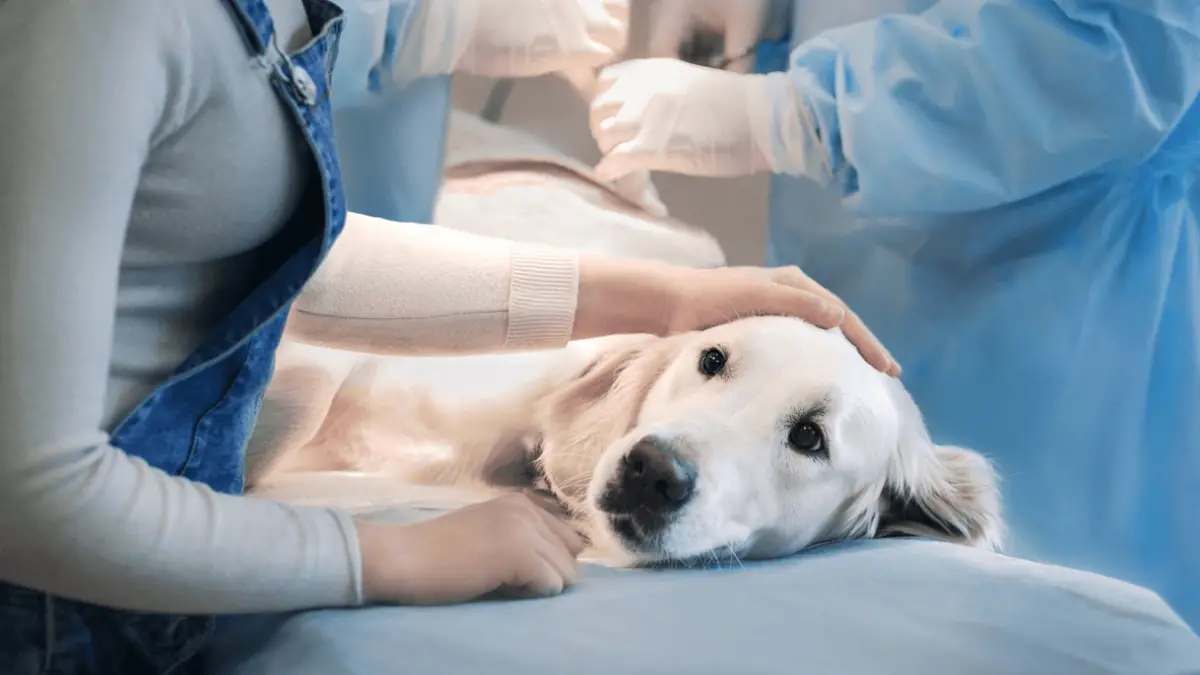Pyometra in Dogs - Diagnosis & Treatment
15.04.2021.
Pyometra is a serious health concern that can have tragic consequences. Female dogs that were not spayed can develop this condition. It is one of the most common health emergencies connected with unspayed female dogs. Although pyometra can be deadly, if dog owners notice it early, it can be treated. Here is what you should know about pyometra in dogs.
What is pyometra?
Pyometra is a health emergency that affects unspayed female dogs. It comes from the Latin “pyometra,” which means pus-uterus. The translation is pretty descriptive and rather accurate. Pyometra can be defined as “a life-threatening uterine infection that most typically affects older, intact (or unspayed) female dogs.”
How do female dogs get pyometra?
After the female heat cycle, the hormone progesterone remains at high levels. The dog’s body “expects” pregnancy, and the uterus lining thickens. If the pregnancy doesn’t happen for a few consecutive cycles, the uterine wall will become very thick. At that time, cysts will form within the thickened uterine tissue. The cysts will then start secreting fluids inside the thickened tissue, which will create an ideal environment for bacteria and their reproduction.
Two additional issues can lead to a “perfect storm” that is pyometra. The first issue is that the uterus cannot contract properly because of high progesterone or uterine thickness. That allows the bacteria to enter the uterus, which they usually cannot.
The second issue is that the white blood cells are prohibited from entering the dog’s uterus during the female heat cycle. White blood cells would destroy or damage the male dog’s sperm, and the chances of pregnancy would be slim to none. However, preventing white blood cells from being active allows bacteria to reproduce effectively.

How can bacteria enter the dog’s uterus?
Dog’s bodies have different types of bacteria on them at all times. Some of them can be found in the dog’s vagina. The cervix is responsible for preventing these bacteria from entering the uterus, and the cervix will usually stay closed tightly. The only time it opens is during the heat cycle to allow the sperm to enter the uterus. During the heat cycle, when the cervix is open, the bacteria can enter. If they come across the thickened uterine tissue and cysts, they will come across the perfect environment for them.
What dogs are at risk from pyometra?
Theoretically, all sexually mature, unspayed female dogs can be affected by pyometra. However, vets have reported that older dogs are responsible for most pyometra cases. Years of heat cycles without pregnancy can create the perfect conditions for pyometra, and it can develop anywhere from 2 to 8 weeks from the last heat cycle.
What are the pyometra symptoms?
When it comes to pyometra in dogs, different symptoms can occur depending on what type of pyometra developed. The pyometra type will depend on the cervix. The cervix can remain open, or it can close, and different symptoms can be observed.
Closed cervix
If the cervix is closed, there will be no visible discharge from the dog’s vagina. The pus that formed inside the uterus will remain there, and the dog’s abdomen will distend. Bacteria will release toxins that will enter the dog’s bloodstream, and the dog will become very sick very fast. The symptoms of pyometra with a closed cervix are;
- Lethargy
- Depression
- Vomiting
- Diarrhea
- Loss of appetite
Open cervix
The pyometra with an open cervix is easier to spot. The main difference will be that the open cervix allows the pus to exit. There will be visible pus or discharge coming from the dog’s vagina. Check the hair under their tail or the bedding where the dog is sleeping. There should be signs of vaginal discharge. Other symptoms that may be visible are;
- Loss of appetite
- Depression
- Fever
- Lethargy
How is pyometra in dogs diagnosed?
The vet will ask for some common signs dogs might have pyometra. If the dog seems sick and is drinking a lot of water, and they had a heat cycle 2 - 8 weeks before, most vets will suspect pyometra. The chances of pyometra are bigger if the dog is older than 6 years.

The vet will order blood analysis and check for elevated white blood cells and globulins in the blood. The vet might also recommend X-rays and ultrasound. X-rays can be inconclusive in cases of pyometra with a closed cervix.
How is pyometra treated?
The most effective way of treating pyometra in dogs is by surgery. The infected uterus and ovaries are removed. The process is called ovariohysterectomy, which is the same process as spaying a female dog. However, the infection makes the surgery a bit more challenging. Hence, it is crucial to spot the disease as soon as possible. The sooner pyometra is spotted, the better the chances of a full recovery.
What if my female dog is a prized breeding dog?
There are other ways of treating pyometra in dogs, although they can be a lot less effective than surgery. Infected dogs can be treated with prostaglandin hormones. These hormones will relax the cervix and cause the uterus to contract and expel all the bacteria and pus. However, there are certain things you should keep in mind about treating your dog with prostaglandins;
- The success is questionable, and treatment will include severe side effects like increased defecating, vomiting, abdominal pain, panting, restlessness, and excessive salivation. These side effects will start a few minutes after the injections and last for a couple of hours.
- The treatment will not take effect for at least 48 hours, so if the pyometra is fairly developed or the dog is extremely sick, this treatment option might not even be available.
- In cases of pyometra with a closed cervix, this treatment option can cause the uterus to rupture. That means the infection will spill in the dog’s abdominal cavity. That will cause a severe condition called peritonitis.
This is a risky treatment option that has questionable success and allows space for infection to return. This is usually an option for dog breeders whose dogs are actively being bred. However, it is best to talk to your vet about all the possibilities.
World Dog Finder team







Share